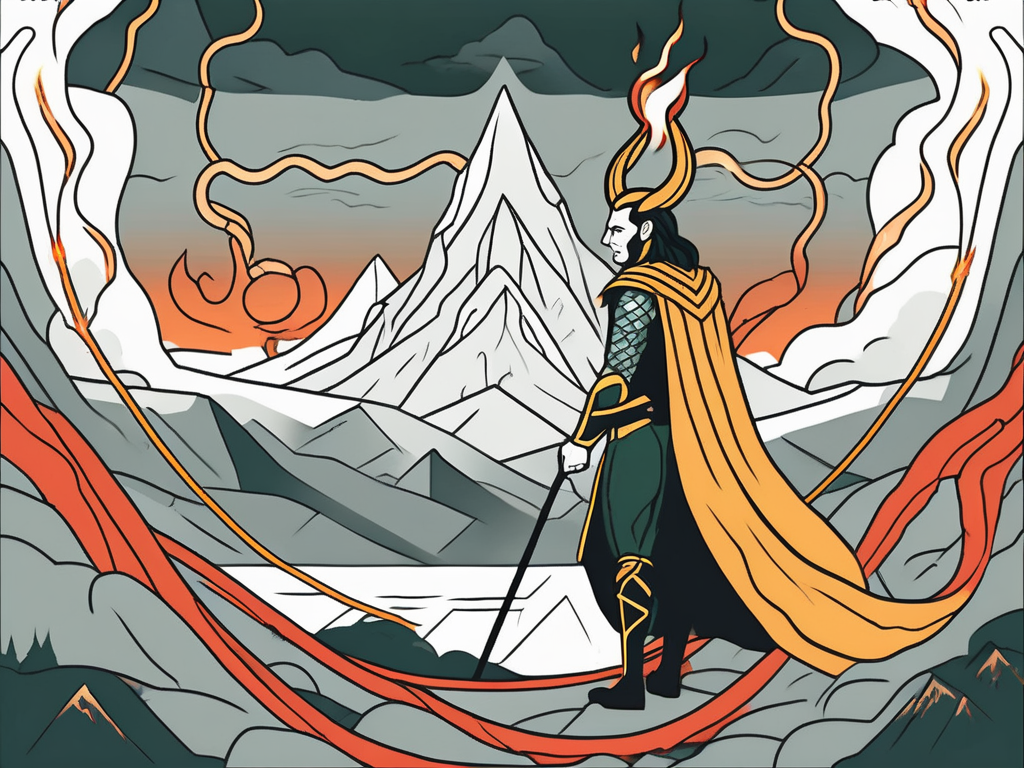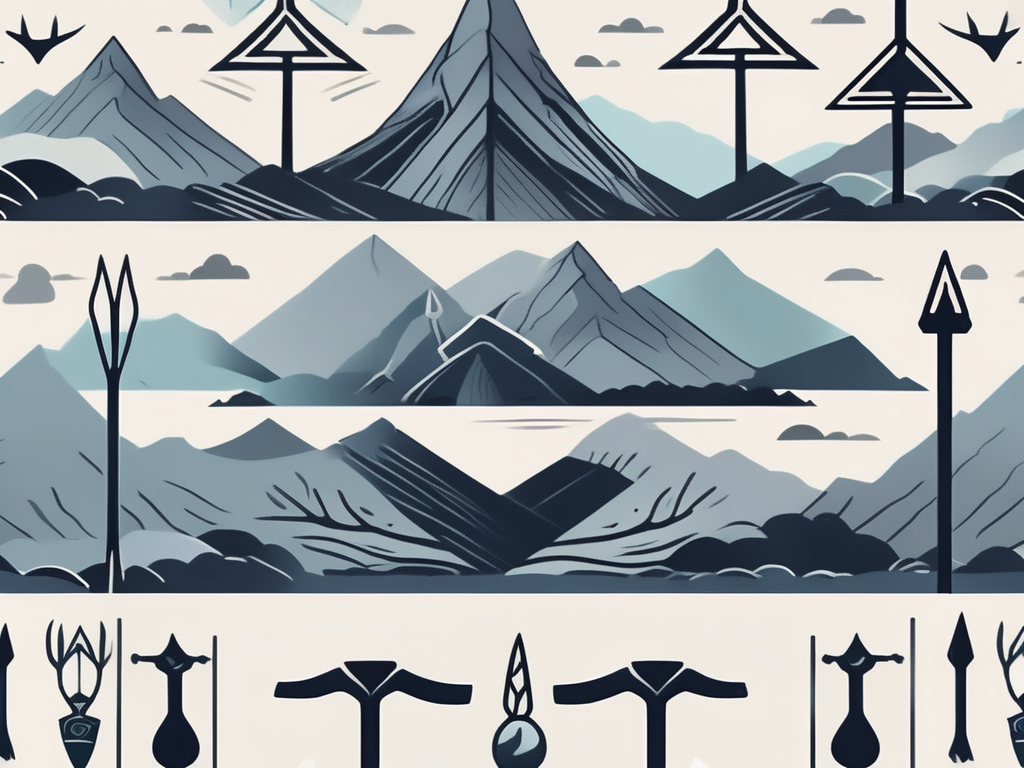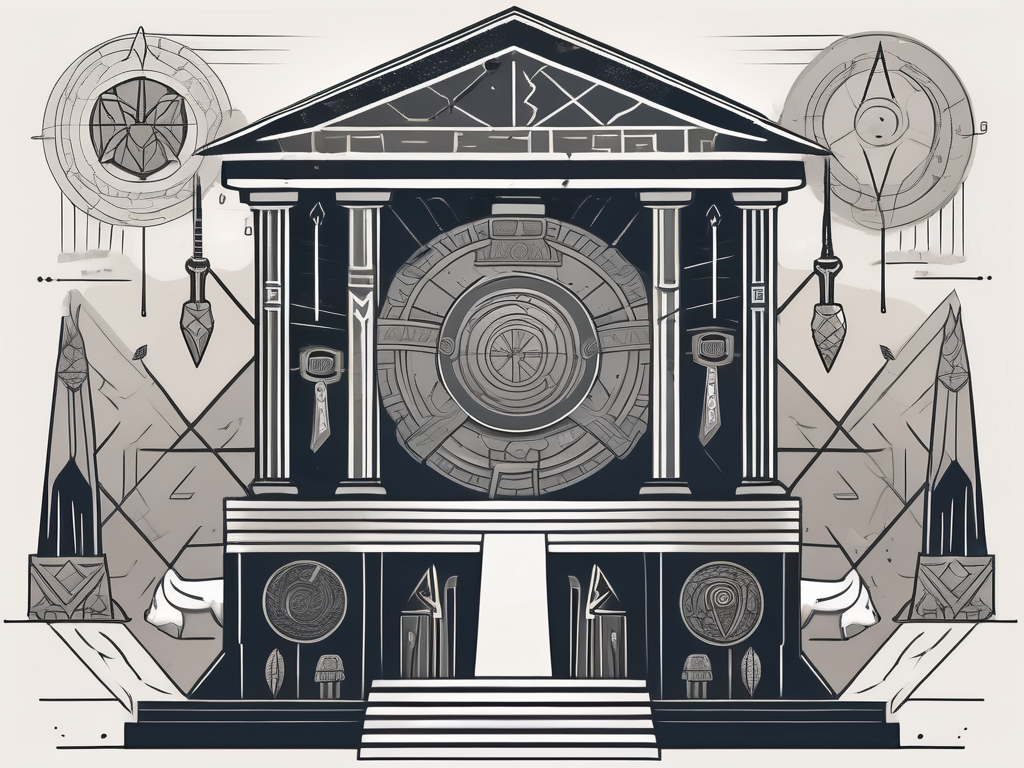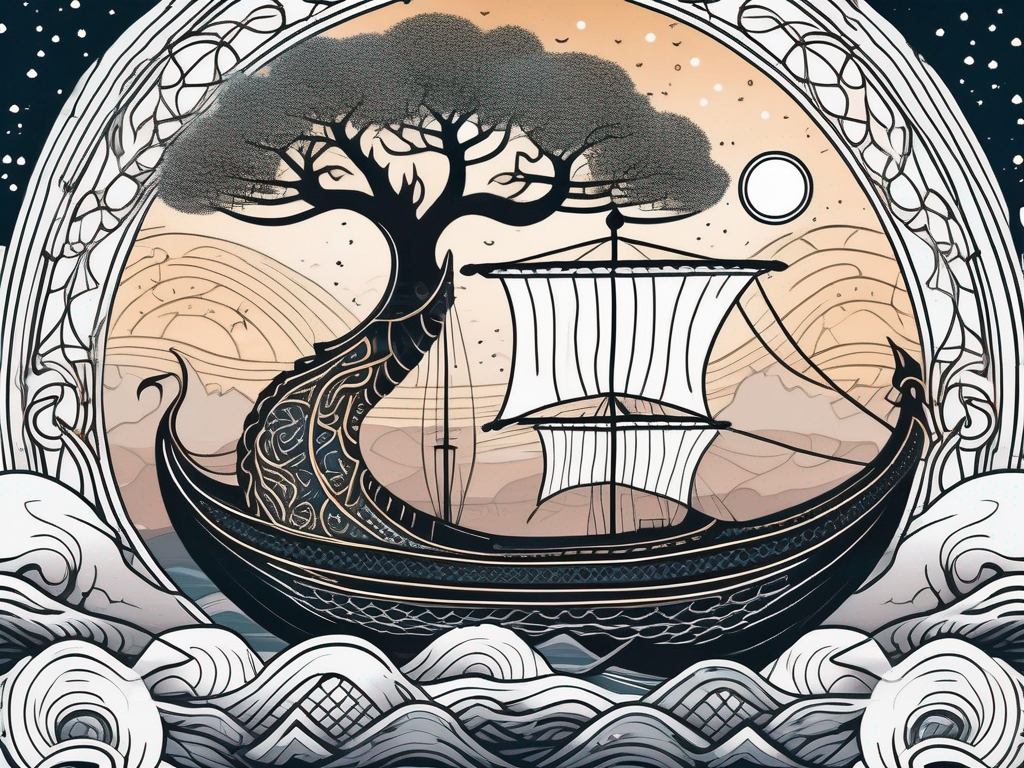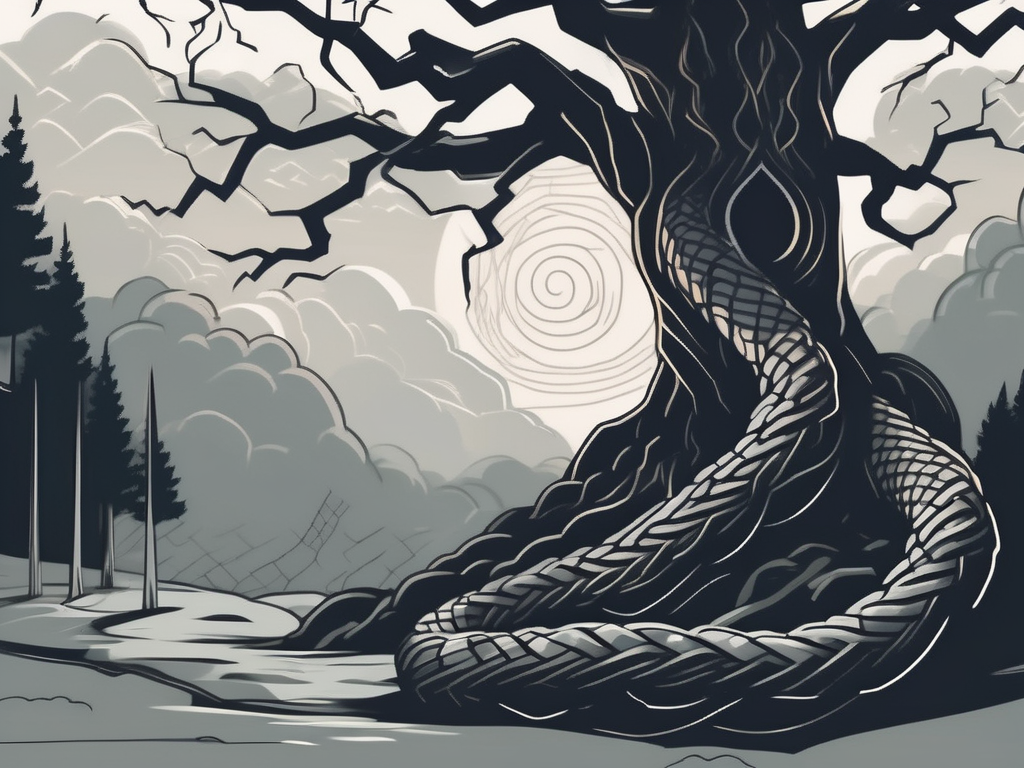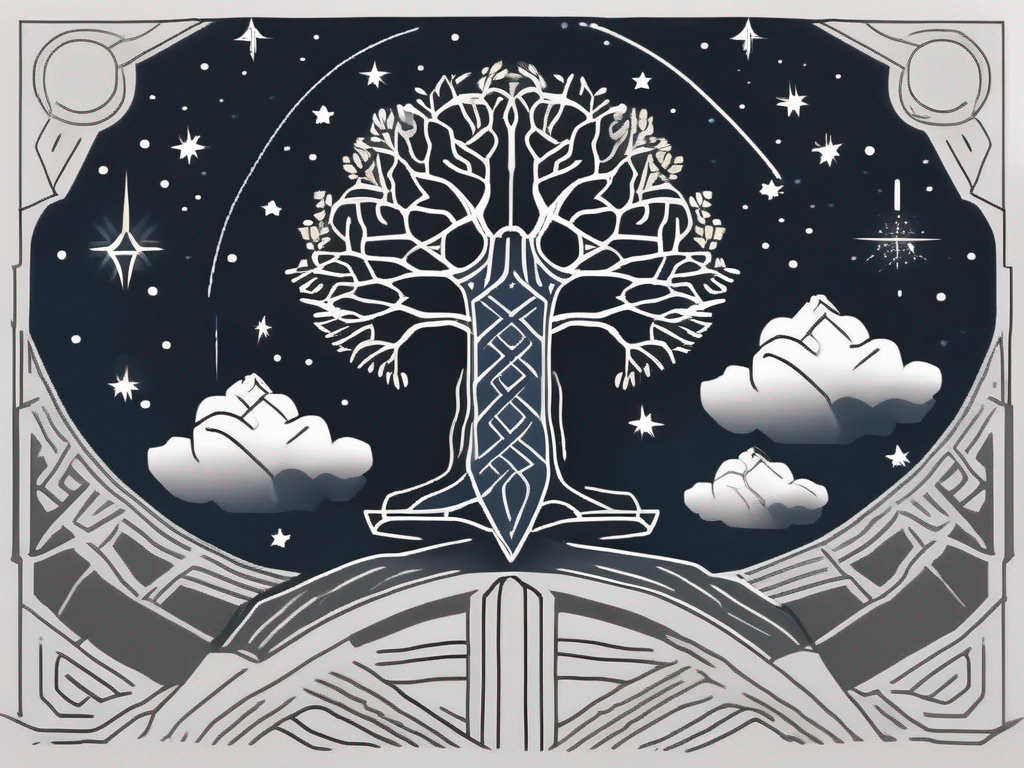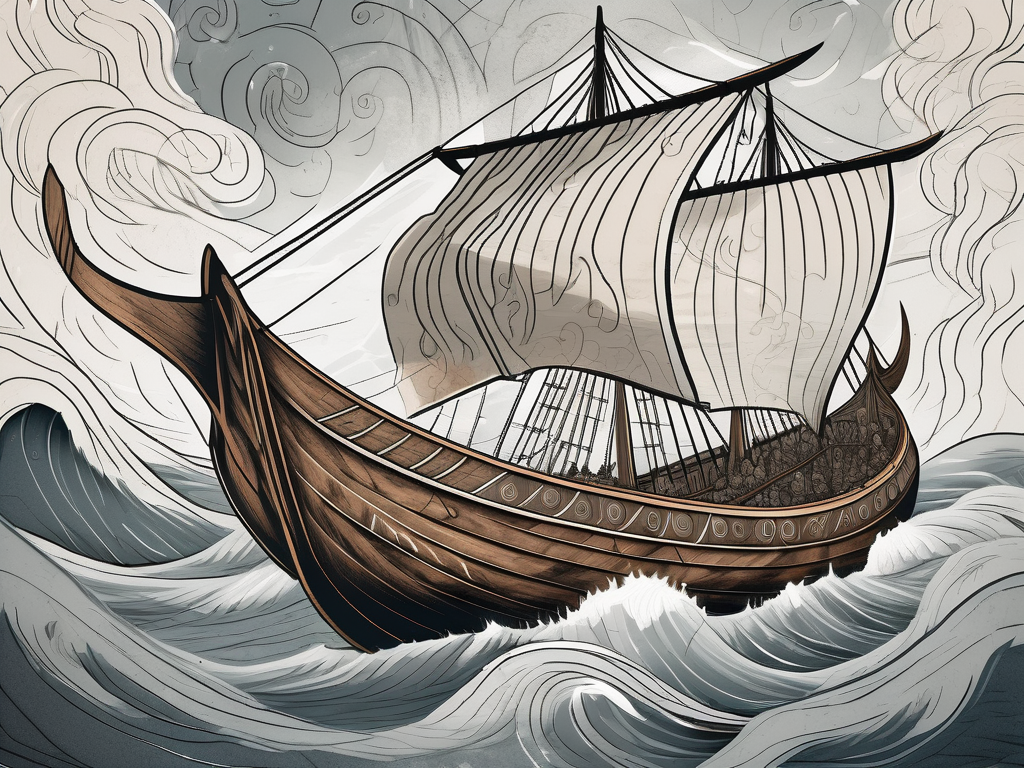Loki, the mischievous Norse god, is a fascinating and complex character in Norse mythology. With his cunning and shape-shifting abilities, Loki captivates our imaginations and leaves us wondering about his true intentions. In this article, we will explore the various aspects of Loki’s character and his significance in Norse mythology and popular culture.
Understanding Loki’s Role in Norse Mythology
One cannot truly grasp the essence of Norse mythology without delving into the role Loki plays. Known as a trickster and a shape-shifter, Loki’s presence is felt throughout the tales of gods and goddesses. His ability to blend in and deceive makes him both intriguing and unpredictable.
But who is Loki really? What drives him to act the way he does? To answer these questions, we must explore Loki’s relationships with other gods and his pivotal role in Ragnarok.
One aspect of Loki’s character that sets him apart from other gods is his complicated relationship with the other deities. Loki’s connection with the gods is filled with both love and animosity. As the blood brother of Odin, Loki shares a special bond with the Allfather. Their brotherhood is a testament to the complexity of their relationship, as they are both allies and adversaries at different times.
However, Loki’s association with Thor is more tumultuous. While Loki aids Thor on some occasions, he also schemes against him, showcasing his unpredictable nature. This dynamic between the two gods adds depth to their interactions and keeps the audience guessing about Loki’s true intentions.
Furthermore, Loki’s relationship with the goddesses is equally intricate. His marriage to the beautiful Sigyn highlights his ability to charm and deceive. Their union is a testament to Loki’s persuasive nature, as he manages to win the heart of a goddess. Yet, his affairs with other goddesses, such as Angrboda, bring chaos and tragedy into the world of gods. These relationships showcase the complexity of Loki’s character and his impact on the lives of those around him.
Loki’s Role in Ragnarok
Ragnarok, the cataclysmic battle that signifies the end of the world in Norse mythology, is a pivotal event where Loki takes center stage. He is both a catalyst for the destruction and a key player in the final battle. This showcases the duality of Loki’s nature, as he harbors both destructive and redemptive qualities.
As the world crumbles, Loki fights alongside the giants, his true nature revealed. His involvement in Ragnarok ultimately leads to his own demise, but his legacy lives on in the realms of mythology and beyond. The chaos and destruction he brings forth serve as a reminder of the unpredictable forces that exist in the world.
It is through Loki’s actions and relationships that we gain a deeper understanding of his role in Norse mythology. His ability to shape-shift and deceive mirrors the ever-changing nature of the world itself. Loki’s presence in the tales of gods and goddesses adds a layer of complexity and intrigue that captivates audiences to this day.
The Many Faces of Loki
One of the reasons Loki continues to captivate audiences is the multitude of personas he embodies. From his role as a trickster to his ability to morph into various forms, Loki’s versatility makes him an intriguing character.
Loki as a Trickster
The trickster archetype is synonymous with Loki. He thrives on chaos and thrills in outwitting others. Whether it’s playing pranks on his fellow gods or engineering grand schemes, Loki’s mischievous nature delights and frustrates those around him.
One memorable tale of Loki’s trickery involves his involvement in the creation of Thor’s hammer, Mjolnir. In this story, Loki cunningly distracts the dwarves who are crafting the weapon, causing them to make a flaw in the handle. This flaw ultimately leads to the hammer’s short handle, making it a symbol of Thor’s strength and power.
However, Loki’s trickster persona is not without consequences. His actions often have far-reaching repercussions, plunging the gods and mortals alike into chaos and turmoil. For example, Loki’s manipulation and deceit ultimately lead to the death of Baldr, the god of light and purity. This tragic event sets off a chain of events that result in Ragnarok, the apocalyptic battle of the gods.
Loki as a Shape-Shifter
Loki’s ability to change his form adds another layer of intrigue to his character. From transforming into animals to assuming the appearance of another person, Loki’s shape-shifting abilities grant him immense power and enable him to navigate Norse mythology undetected.
One of Loki’s most famous shape-shifting exploits is when he transforms into a mare to distract the stallion of a giant, resulting in the birth of Sleipnir, Odin’s eight-legged horse. This act of trickery not only showcases Loki’s shapeshifting prowess but also highlights his willingness to go to great lengths to aid his fellow gods.
Yet, this power comes at a cost. Loki’s constant shape-shifting highlights his struggle with identity and self-acceptance, emphasizing the internal conflicts that drive his actions. His ability to change his appearance at will reflects his desire to fit in and be accepted, even if it means sacrificing his true self. This constant search for belonging fuels his mischievous behavior and contributes to the complex and enigmatic nature of his character.
Furthermore, Loki’s shape-shifting abilities also serve as a metaphor for the ever-changing nature of the world. Just as Loki can transform into different forms, the world itself is in a constant state of flux, with nothing remaining the same for long. This parallel adds depth to Loki’s character and underscores the themes of transformation and impermanence that permeate Norse mythology.
Loki’s Offspring and Their Impact on Norse Mythology
The offspring of Loki play a significant role in shaping the narrative of Norse mythology. Two of his most notable children are the serpent Jormungandr and the wolf Fenrir.
But Loki’s offspring are not merely characters in a story; they embody the chaos and unpredictability that permeate the Norse cosmos. Their existence is a testament to the complex nature of the gods and the intricate web of relationships that define their world.
The Serpent Jormungandr
Jormungandr, also known as the Midgard Serpent, is a massive sea creature birthed by Loki. This fearsome serpent, with its immense size and power, wraps itself around the world, symbolizing chaos and impending doom.
Legend has it that Jormungandr’s encounter with Thor during Ragnarok is a climactic battle that results in their mutual demise. The clash between these two formidable beings represents the ultimate confrontation between order and chaos, with the fate of the cosmos hanging in the balance.
But Jormungandr is more than just a symbol of destruction. In some interpretations, it is believed that the serpent’s presence also serves as a reminder of the delicate balance that exists in the Norse cosmos. Without chaos, there can be no order; without destruction, there can be no creation.
The Wolf Fenrir
Another of Loki’s offspring is the ferocious wolf Fenrir. Described as a mighty beast with insatiable hunger, Fenrir poses a great threat to the gods and plays a significant part in the events leading up to Ragnarok.
Bound by the gods in an attempt to control its power, Fenrir’s strength and fury are restrained. But as the prophecies foretold, the wolf would eventually break free during the apocalyptic battle, wreaking havoc and causing destruction.
The unleashed fury of Fenrir showcases the profound impact of Loki’s actions and the consequences of his complicated lineage. It serves as a reminder that even the gods are not immune to the consequences of their choices, and that the repercussions of their actions can reverberate throughout the cosmos.
Furthermore, Fenrir’s insatiable hunger symbolizes the eternal cycle of destruction and rebirth that characterizes Norse mythology. Just as the wolf’s hunger can never be satisfied, so too does the cosmos undergo endless cycles of creation and destruction, with each iteration bringing about new beginnings and endings.
Ultimately, the offspring of Loki represent the inherent unpredictability of the Norse gods and the intricate tapestry of their mythology. Their impact on the narrative serves as a reminder that even the most seemingly insignificant actions can have far-reaching consequences, shaping the fate of gods and mortals alike.
Loki in Modern Pop Culture
Loki’s enigmatic persona has transcended ancient mythology and found a place in modern pop culture. From comic books to literature and films, Loki’s influence is far-reaching.
Loki’s Portrayal in Marvel Comics
Marvel Comics has introduced Loki to a wider audience, capturing his essence while giving him a unique modern twist. As a formidable adversary to superheroes like Thor and the Avengers, Loki’s complexities shine through, making him a fascinating and dynamic character.
Marvel’s portrayal of Loki has also sparked debates among fans, who argue over the extent to which the character remains faithful to his mythical origins. Regardless, Loki’s enduring popularity in the comic book world demonstrates the timeless appeal of his mischievous nature.
Loki’s Influence on Modern Literature and Film
Beyond the realm of comic books, Loki’s presence can be felt in modern literature and film. His intricate character and captivating storylines have inspired numerous authors and filmmakers.
Books and movies often explore the duality of Loki’s nature, questioning whether he is a villain or an anti-hero. This ambiguity allows writers and directors to explore complex themes and creates multi-dimensional characters that keep audiences engaged.
The Complexity of Loki’s Character
Loki’s character is a study in contradiction, embodying both villainous and redemptive qualities. This complexity makes him a compelling figure within Norse mythology and popular culture.
Loki as a Villain and Anti-Hero
Throughout Norse mythology, Loki’s actions often align with the role of a villain. His cunning and manipulative nature bring chaos and destruction, challenging the gods and threatening their world.
However, Loki’s character is not limited to villainy alone. In some interpretations, he is portrayed as an anti-hero, an individual whose motives are murky and whose actions blur the lines between good and evil.
The Duality of Loki’s Nature
A fundamental aspect of Loki’s character is the duality he embodies. He can be both a creator and a destroyer, a force of chaos and a catalyst for change. This inner conflict adds depth to his persona, leaving us questioning his motivations and sympathizing with his plight.
Loki’s constant struggle between his mischievous and redemptive tendencies makes him a character of endless fascination, ensuring his enduring presence in mythology and pop culture.
In conclusion, Loki, the mischievous Norse god, is a figure of captivating complexity. From his role in Norse mythology to his influence on modern pop culture, Loki continues to captivate audiences with his trickery, shape-shifting abilities, and enigmatic character. Whether viewed as a villain or an anti-hero, Loki’s legacy endures, reminding us of the timeless appeal of flawed and multifaceted characters.
